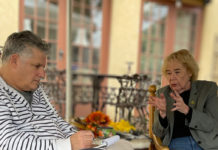Two new anti-tobacco laws passed unanimously by the Santa Clara
County Board of Supervisors have divided neighbors in
unincorporated areas of the county as some say the government is
overreaching while others applaud the effort to reduce secondhand
smoke.
Two new anti-tobacco laws passed unanimously by the Santa Clara County Board of Supervisors have divided neighbors in unincorporated areas of the county as some say the government is overreaching while others applaud the effort to reduce secondhand smoke.
The ordinances ban smoking inside multi-unit residences and common areas, and outlaws smoking at county fairgrounds and all 28 county parks, including Anderson Lake, Coyote Creek-Harvey Bear and Chitactac Park.
A third ordinance is expected to pass Nov. 23 will require tobacco retailers to obtain an annual license for $425.
Since the Board of Supervisors ban is applicable to unincorporated areas only, the residences and businesses affected most often are in San Martin and Stanford, two of the largest unincorporated yet populated areas in the county.
Seventeen multi-unit residences in San Martin, seven in Gilroy and four in Morgan Hill face penalties starting with a $100 fine and even a misdemeanor charge for the third violation within a year if tenants violate the new rules: no smoking in common areas, new and existing units and new leases must include a clause describing the smoking rules. Smokers can light up in designated smoking areas, however.
At the Boccardo Family Center on Monterey Road in San Martin, residents are already not allowed to smoke inside their apartments.
“They’re at one corner over there, or over at that corner,” said Patricia Vasquez, the program manager at the county-run center that helps migrant families find permanent homes.
Boccardo has 25 units on its property and all are families with children younger than 18. Vasquez said the center has hosted workshops for youths related to addiction, but she said an anti-smoking workshop is a good idea in light of the new rules.
“It’s hard to know if someone’s smoking inside, but if we smell it they get a warning and it goes up from there,” Vasquez said. She said the tenants for the most part of very respectful of the rules and go to the street corners on Monterey Road to smoke.
The comprehensive measures, make Santa Clara County one of the most aggressive jurisdictions in the nation in preventing youth tobacco use and protecting residents from secondhand smoke.
According to the Centers for Disease Control and Prevention, cigarette smoking causes about one of every five deaths in the United States each year. The CDC estimates 443,000 people die annually from cigarette related illnesses and 49,400 of those deaths each year are from secondhand smoke exposure.
“The residents of this county deserve strong policies to safeguard their health,” board president Ken Yeager said Tuesday, who brought the ordinance to the Board of Supervisors. “These ordinances make Santa Clara County a national leader in blocking tobacco sales to minors and protecting residents from secondhand smoke.”
Smoking is prohibited within 30 feet of any outdoor service area, such as a ticket line or the outdoor portion of a restaurant. Also, motels and hotels in unincorporated areas will become entirely smoke-free facilities.
Funding for public education about the ordinances will come out of the Santa Clara County Public Health Department’s Communities Putting Prevention to Work grant under the federal American Recovery and Reinvestment Act.
A San Martin resident, Wendy (who declined to give her last name), was not aware that the ordinances had passed Tuesday. She was surprised the government could reach that far into her home and dictate who could smoke. A behavior that is legal, she pointed out.
“I don’t know how they’re going to enforce it. Are my neighbors going to look in my windows with binoculars to check?” she asked. She doesn’t smoke, but the couple to whom she rents a room does.
“They don’t smoke inside ever. I just don’t see any good reason to do this.” Wendy laughed when told the reasons the Board of Supervisors gave for passing the ordinances.
“Secondhand smoke out in the country? I don’t think so,” she said.
Two miles down the road lives Carmella Patton. Her home is one of two units on the shady plot on Columbet Avenue. Patton said not once had she smoked a cigarette during her long life, though was around secondhand smoke as a child. Not long ago she was diagnosed with stage four lung cancer.
“I asked the doctor, what happened to stage one, two and three?” Patton said. It’s not rare and not unusual for a nonsmoker to have lung cancer, Patton said. She moved to Morgan Hill a year ago and is soaking in each day, spending a lot of her time spreading “Grandma Love” with her grandson and granddaughter.
The new ordinances, she added, are “absolutely intrusive.”
“But, I empathize with those who smoke and who are addicted to it. They might not have the wherewithal, be it a support system or family (to quit). Addiction is more than that isolated issue of smoking. To deal with just the smoking isn’t going to fix it.”
Patton shared a story about her grandson when he was 7-years-old, about three years ago. During a doctor’s visit, Patton showed him the different preserved lungs and he returned home pleading with his mother, “Mom, you have to stop smoking. I don’t want you to die.”
She did quit right after that, cold turkey, Patton said.
“This effects the village, and the solution will effect the village,” Patton said.
Why you should care
If you live in unincorporated Santa Clara County and share any common living space, yard or walls with a neighbor, these new ordinances affect you. No longer is smoking permitted inside apartments, townhomes or duplexes and if caught, smokers will face a $100 fine. Three violations within one year could mean a misdemeanor charge. Smoking is also prohibited at county parks, fairgrounds, outdoor ticket lines, outdoor shopping malls and all hotel and motel rooms and their common areas. It will be allowed in designated areas. These policies go into effect 30 days after final approval, or Dec. 9, 2010.









